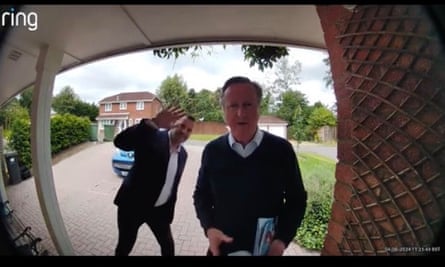
This might be the first TikTok general election, but it probably won’t be the first election decided by it for one simple reason: the video app’s British users are already likely to vote Labour.
“The problem is that almost everyone on TikTok is already on our side,” said one Labour campaign source. “We need to reach swing voters.”
TikTok’s relatively youthful user base and Labour’s enormous poll lead among younger voters has given the app a strange role in this election. There’s no doubt that tens of millions of Britons are consuming election content on the platform. It is an excellent place for memes to spread, embarrassing videos to go viral, and passionate political opinions to find an audience. And all the parties feel they have to engage with it.
Yet it is also seen within Labour as an unreliable way of carrying Keir Starmer’s core messages on economic or education policy to “Whitby Women” and the other precise groups of undecided voters who will decide dozens of marginal constituencies over the UK.
Even being on TikTok is a strong indicator that someone is already inclined to vote Labour, according to research by Deltapoll. They found TikTok users are 31% more likely to vote for Keir Starmer’s party than people of the same age and background who do not use the video app.
“The conclusion you can take from that is that you’re more likely to be a Labour voter if you use TikTok,” said Mike Joslin, a veteran digital campaigner who commissioned the research for his artificial intelligence start-up Bombe. “Other channels offer you more control over reaching undecided voters.”
TikTok is undoubtedly culturally powerful in the UK, with 45% of British internet users using the app for an average of 28 minutes a day, according to Ofcom. Anyone who has seen the queues outside a TikTok-viral restaurant or shop knows the app can have substantial real-world impact and change behaviour. Although the stereotypical user is gen Z, in reality its audience is getting older, with much of its recent growth coming from 30-somethings.
Joslin said the app has become “essentially television”, with users endlessly scrolling past videos without necessarily engaging: “You can reach 10 million people but what is the impact on actual voter intention? Rather than necessarily being a tool for persuading voters, it’s more a tool for mobilising voters.”
One of the biggest challenges is that TikTok is powered by an opaque recommendation algorithm that is incredibly difficult for political activists and journalists to monitor. This means even working out what videos are popular will inevitably focus on what the parties are doing on their official accounts – even though much of the conversation is happening elsewhere and largely unseen.
Older social networks such as X and Facebook were built around the concept of following individuals and sharing content, such as links to news stories, in a way that was possible to track and monitor. TikTok is centred on a powerful algorithm that works out which users might enjoy a certain piece of content and then provides them with a suitable stream of videos.
The end result is highly unpredictable and not always useful for a political campaign. A member of the public with no following who makes a particularly engaging political video (such as the million people who watched footage of David Cameron through a Ring doorbell while campaigning in Hampshire) will outperform a carefully constructed official post by an official channel (such as the 40,000 people who watched Rishi Sunak answer a question about farming on the Conservative party’s official account).
According to one Labour campaigner, the objective of the party’s TikTok strategy is to get younger people to download videos (such as a post comparing Rishi Sunak to a card in the game Magic the Gathering) then post them in family WhatsApp groups. This way, they said, TikTok content may actually reach swing voters: “The strategy is not to target young people – but the off-platform sharing it gets you with friends and family.”



